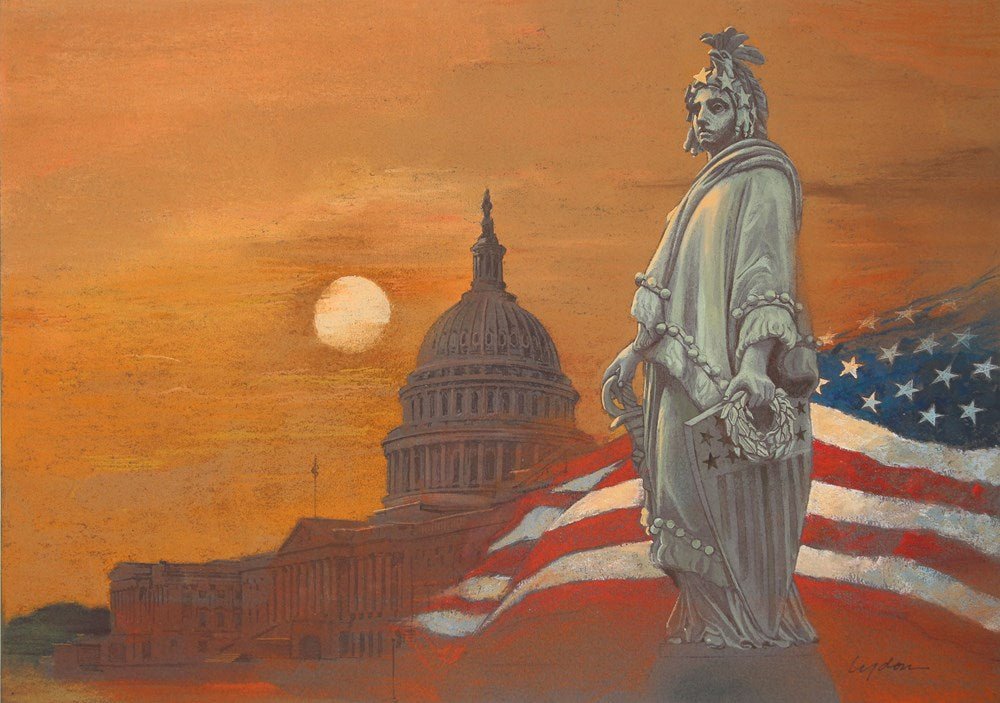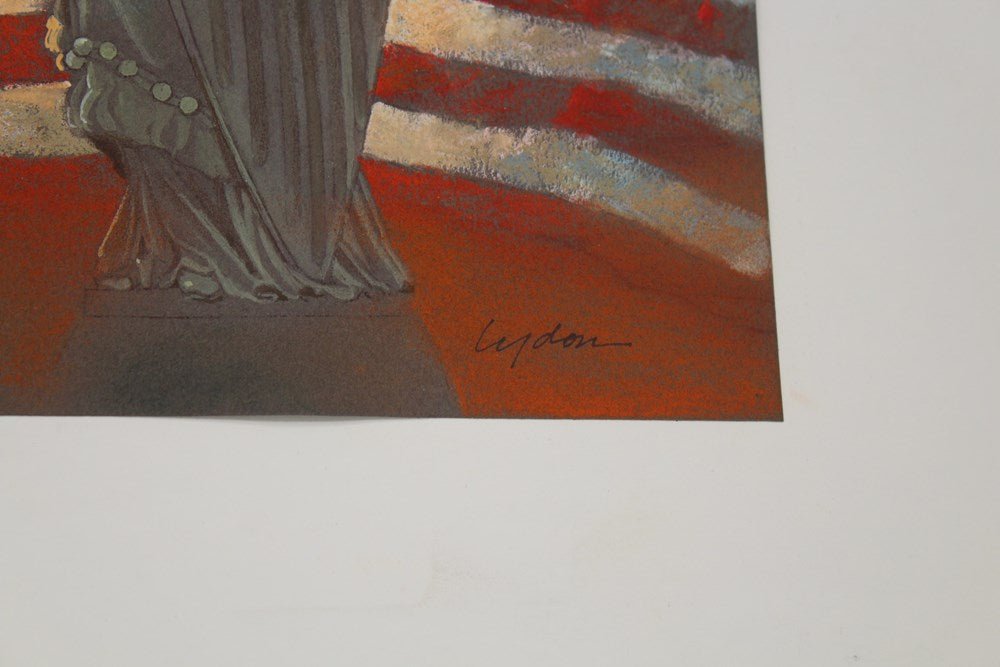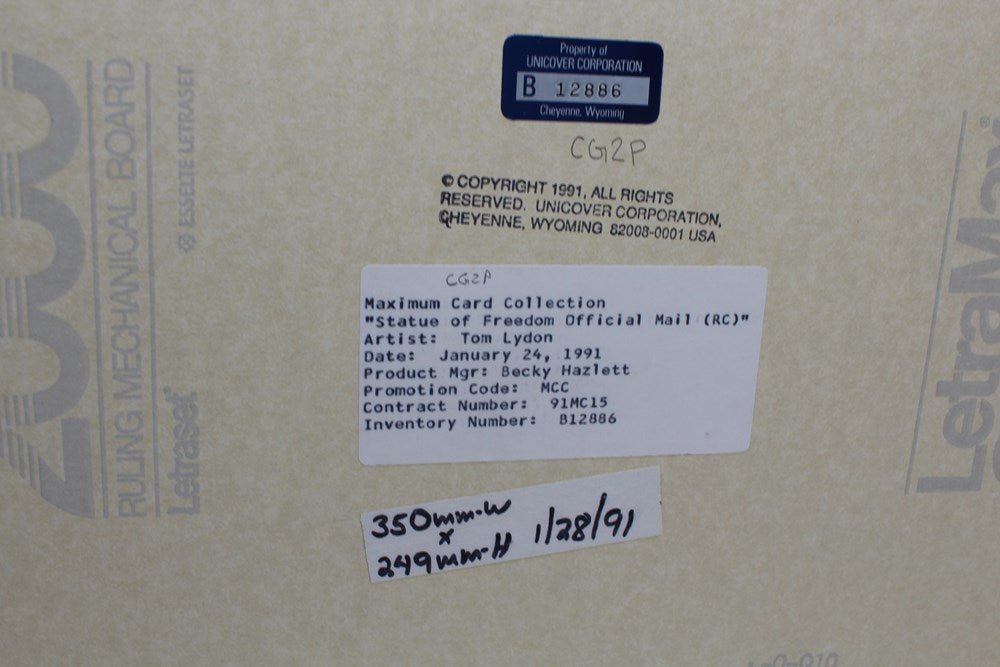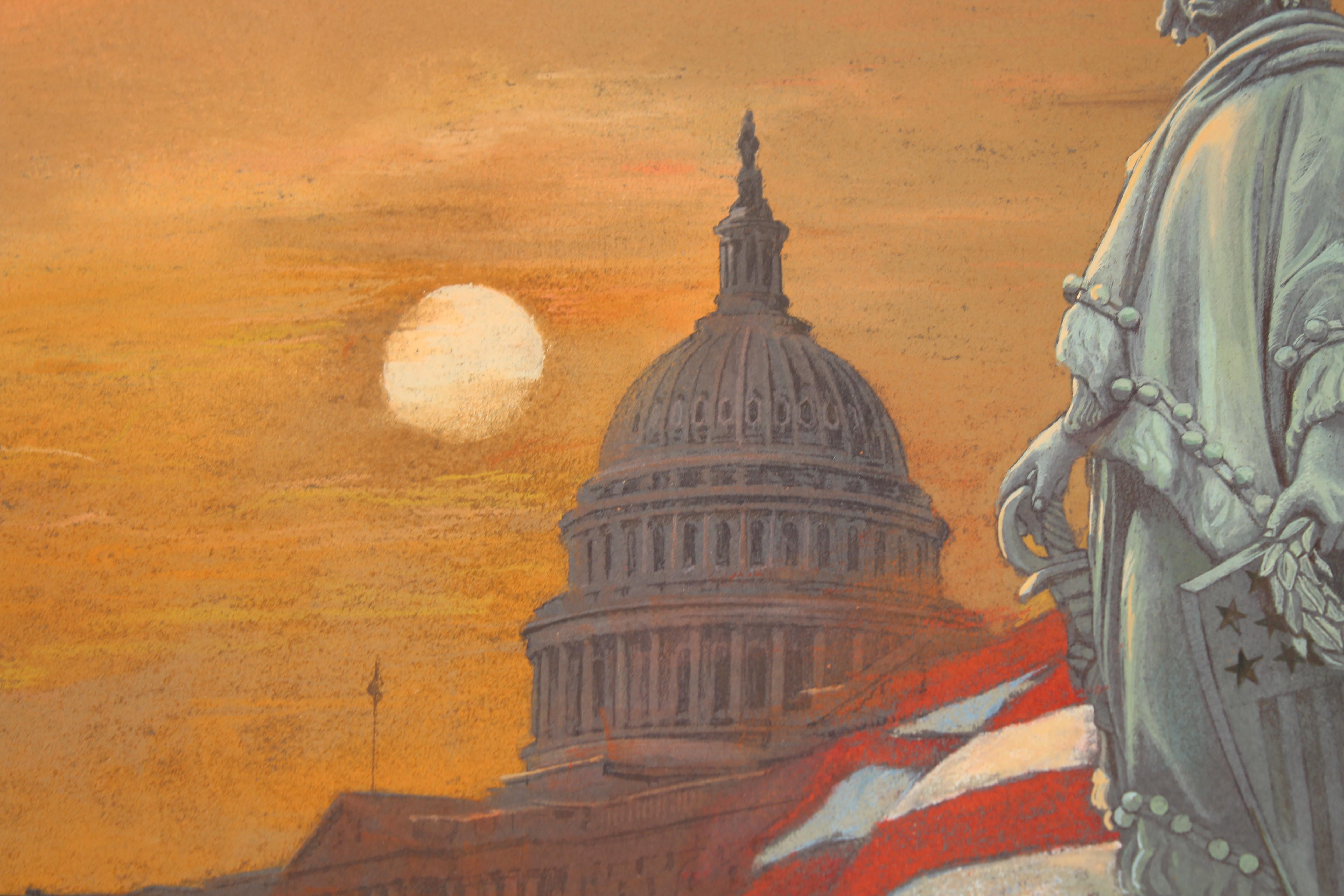



"Statue of Freedom" by Tom Lydon, Original Chalk on Paper, 1991
Presented is “Statue of Freedom,” an original chalk drawing by American artist Tom Lydon. The drawing shows an intricately detailed rendering of the Statue of Freedom, at the lower right of the composition. Behind the statue is a waving American flag. In the background, the U.S. Capitol building stands gleaming in white against a brilliant orange sunrise. Lydon created this stunning artwork in 1991, for use on a Fleetwood Maximum Card issued in January of that same year.
A Maximum Card consists of a postcard and a stamp tied together by a theme, usually celebrating a historic moment or historical figure. Maximum Cards are similar to First Day Covers and just as collectible. Like First Day Covers, they feature a stamp canceled on its first day of issue and a large artistic cachet that usually fills the whole cover, yet sized for a postcard format, instead of an envelope format. The artistry that goes into these cards is very impressive, as they have to celebrate a moment in history and compliment the art on the stamp. Fleetwood Maximum cards are produced for both commemorative and regular issue U.S. stamps of all denominations.
Thomas Crawford’s iconic bronze “Statue of Freedom” sits atop the dome of the U.S. Capitol. Crawford created the colossal, allegorical figure as a symbol of “freedom triumphant– in war and peace.” The statue is an amalgam of early Roman and Native American symbolism. Crawford described her headdress as a version of a Roman helmet, "the crest of which is composed of an eagle’s head and a bold arrangement of feathers, suggested by the costume of our Indian tribes." The figure is wearing a draped dress, holding a shield, wreath, and sword, which together Crawford wrote represented “Armed Liberty.” She stands on a cast-iron pedestal topped with a globe encircled with the motto “E Pluribus Unum.” The lower part of the pedestal is decorated with Roman fasces and wreaths.
Casting for the statue began in 1860 at Clark Mill’s bronze foundry, located on the outskirts of Washington. Work was halted in 1861 because of the Civil War, but by the end of 1862, the statue was finished and temporarily displayed on the grounds of the Capitol. By late 1863, construction of the new iron dome was ready for installation of the statue, in sections. On December 2, 1863, after the final piece was added, the completed statue was celebrated with a thirty-five gun salute. Thirty five represented the number of stars President Lincoln insisted remain on the American flag, despite the rebellion and succession of the southern states.
CONDITION:
Original chalk on paper. Colors are vibrant. Light smudges throughout, from past handling. Signed in lower right of composition. Unframed, but hinged to ruling mechanical board, for extra stability. Verso is stamped with several past collection stamps, including Unilever Corporation reference numbers and registrar information. Image Size: 9 3/4” H x 13 3/4” W. Paper Size: 15 1/2” H x 20” W.
Accompanied by our company's letter of authenticity.
Pickup available at Colorado
Usually ready in 4 hours

"Statue of Freedom" by Tom Lydon, Original Chalk on Paper, 1991
Colorado
1 Lake Avenue
Colorado Springs CO 80906
United States
Choose options




Frequently Asked Questions
FAQs
Yes, all of our Antiques are certified authentic. Every antique comes with a signed Letter of Authenticity that details the item’s history, its current condition including any conservation, binding, or framing work, and the item’s provenance. The Letters of Authenticity are priced valuations by our authentication specialists, who assure that items are original and unconditionally guaranteed as genuine for life.
We pack and ship your items from our gallery in Colorado Springs. You may also choose to come pick up your order. Antique items are carefully packed and insured during shipping. The shipping price will be calculated at checkout.
We acquire from a variety of trusted sources all over the world, but mostly through auctions and private collections within the United States. All provenance information will be listed on the Letter of
Authenticity accompanying your purchase.

